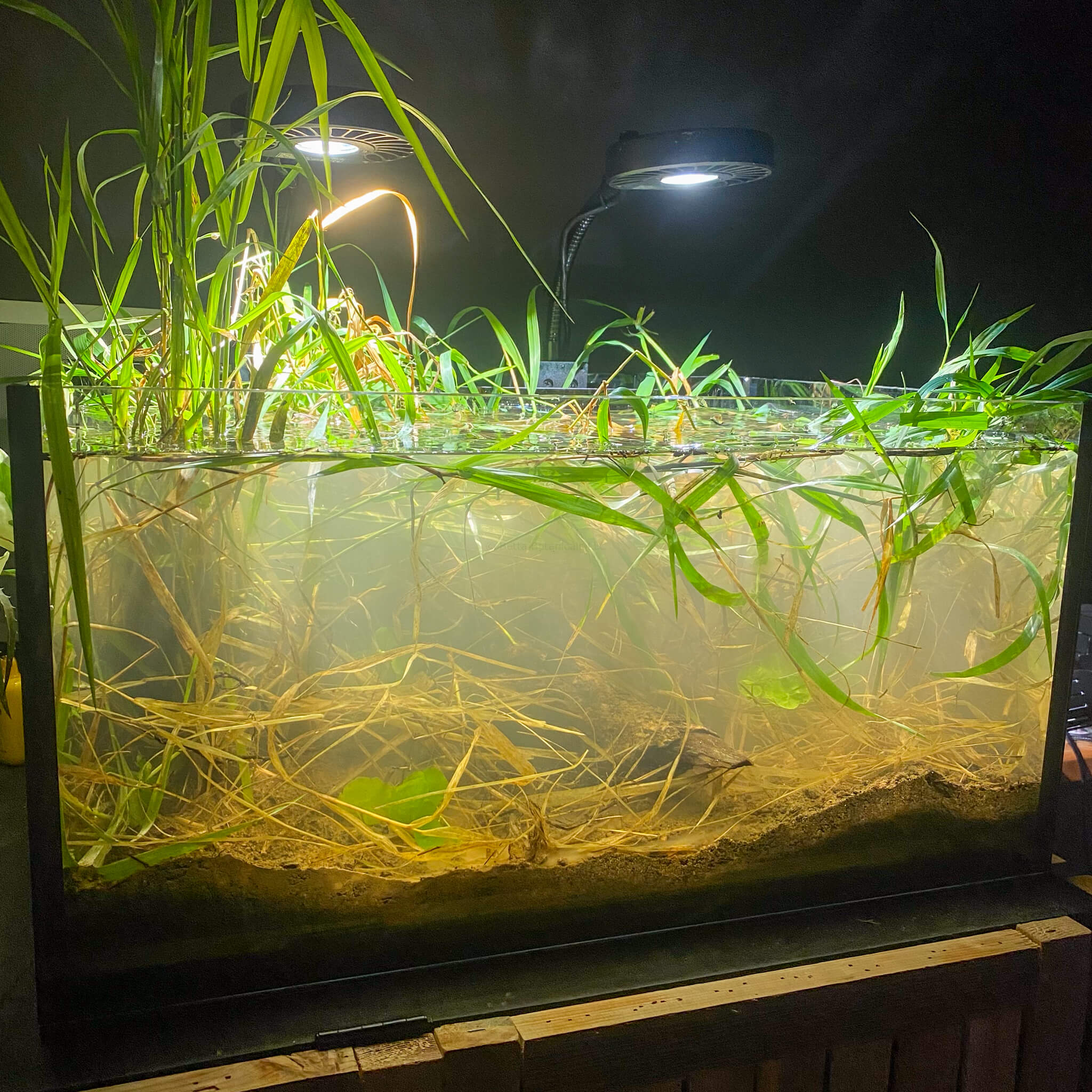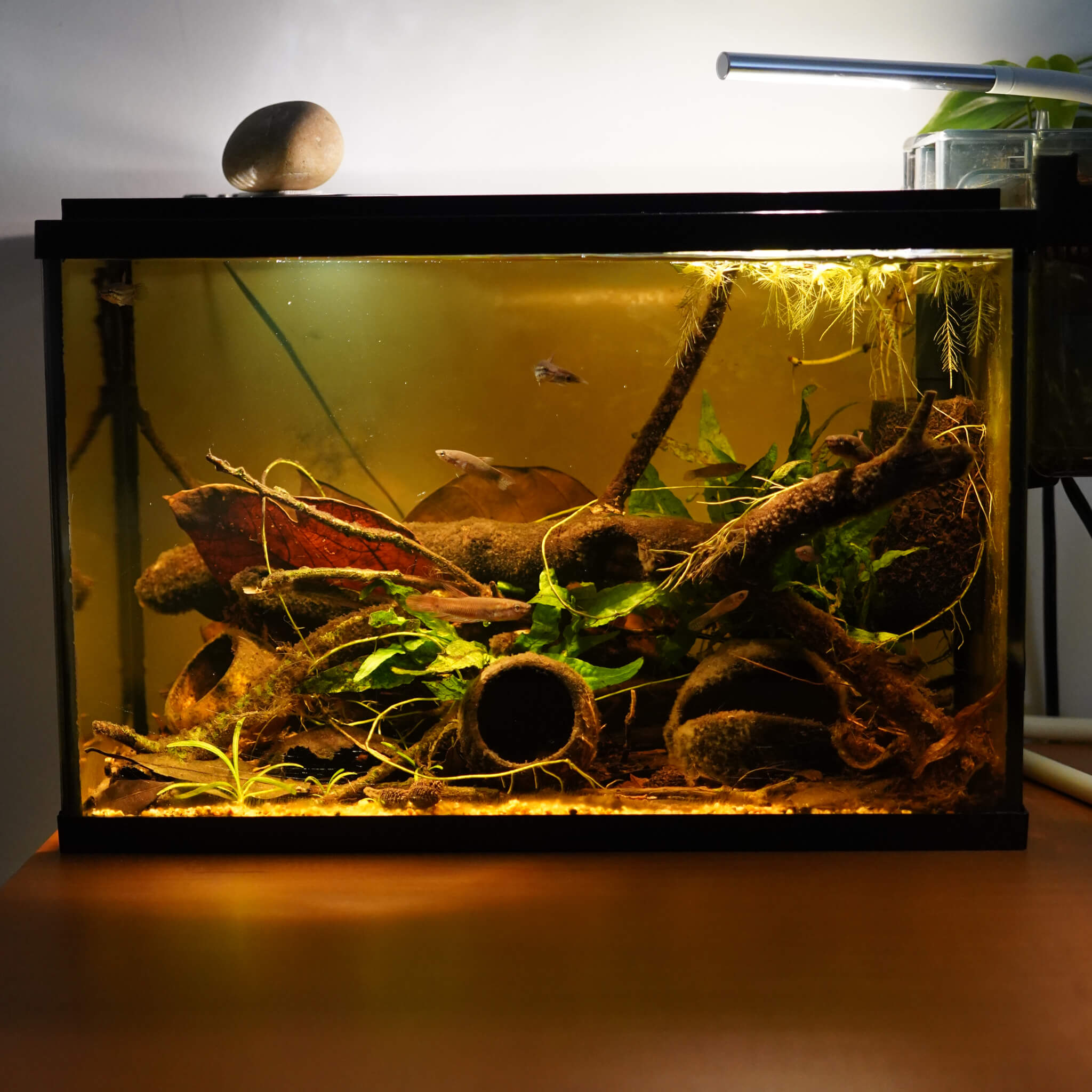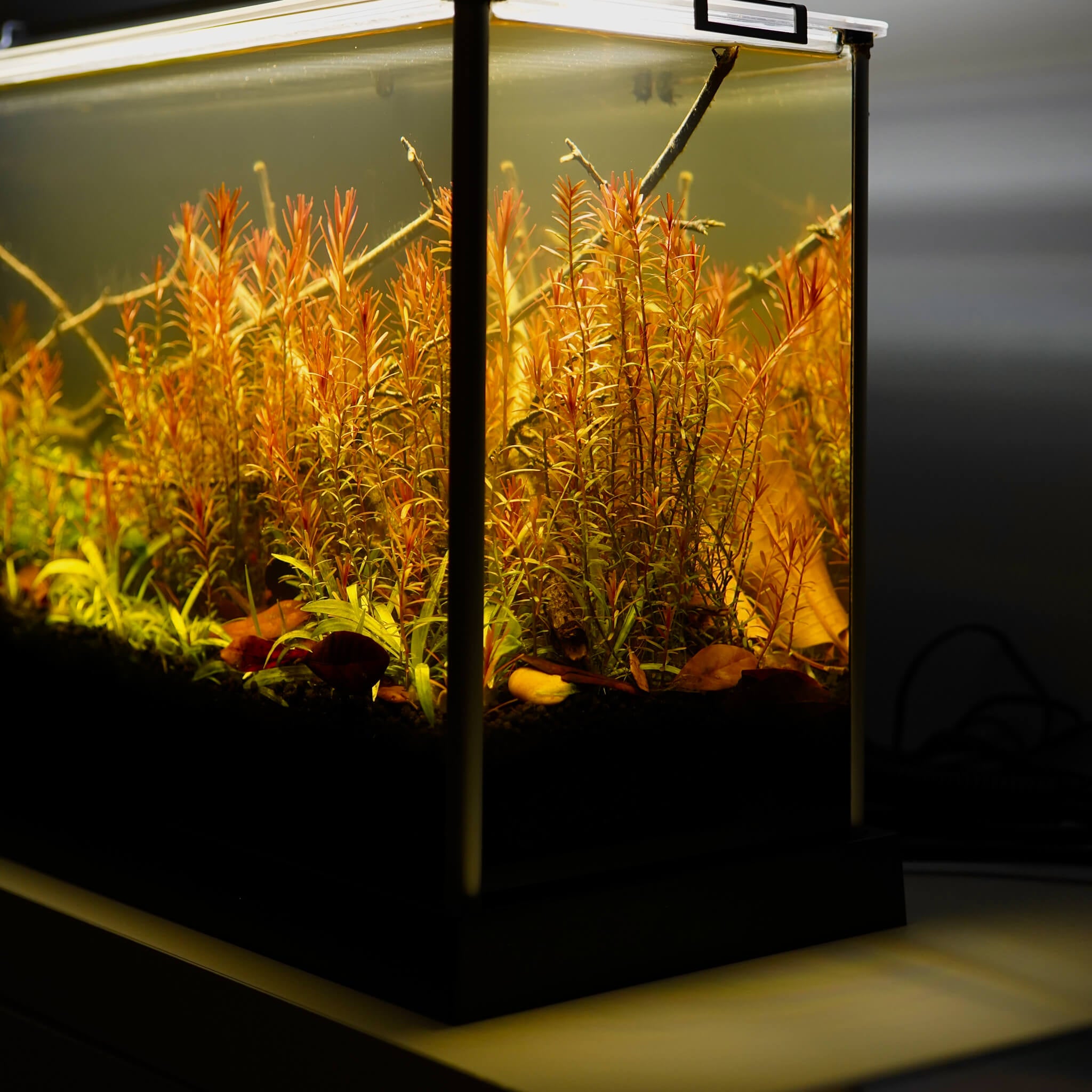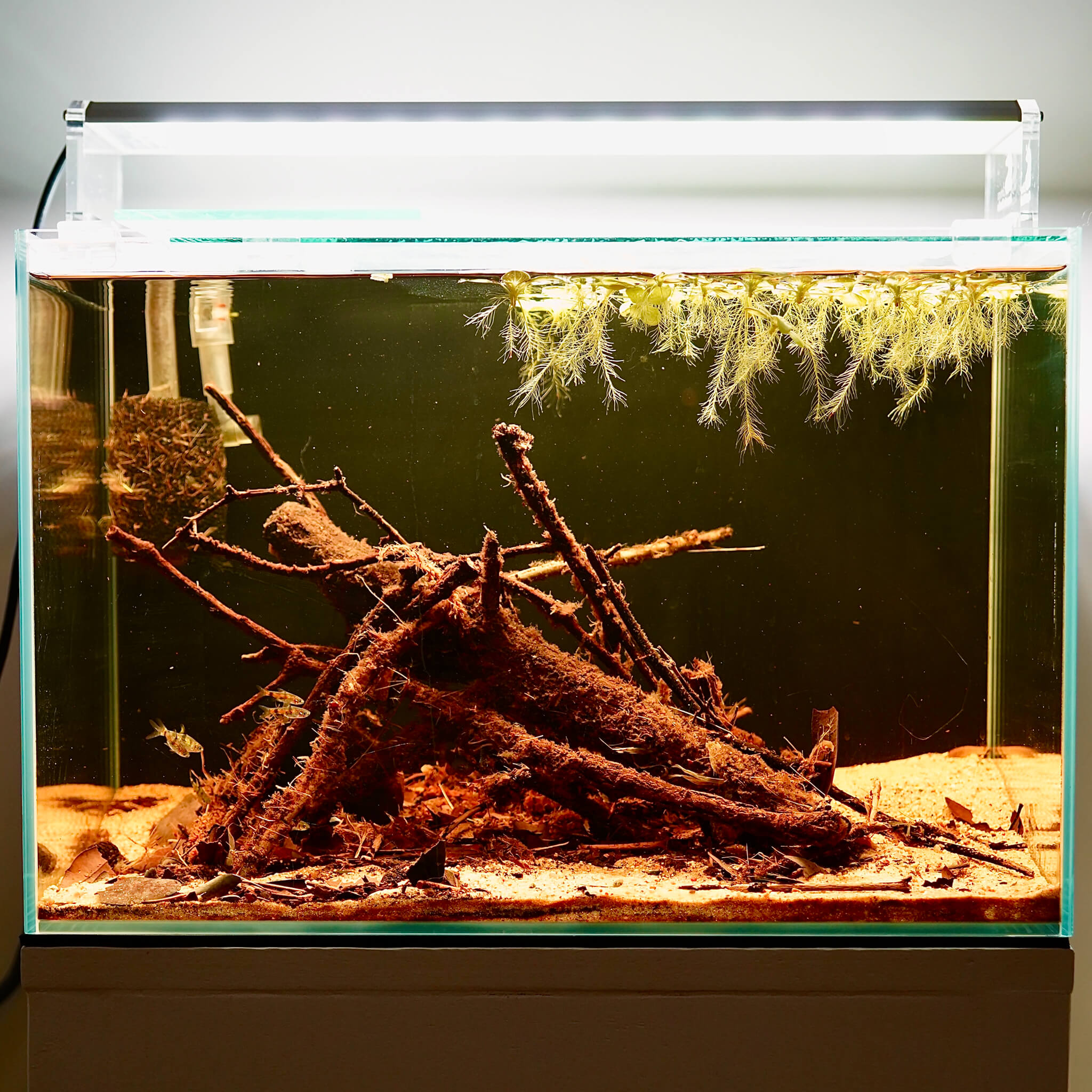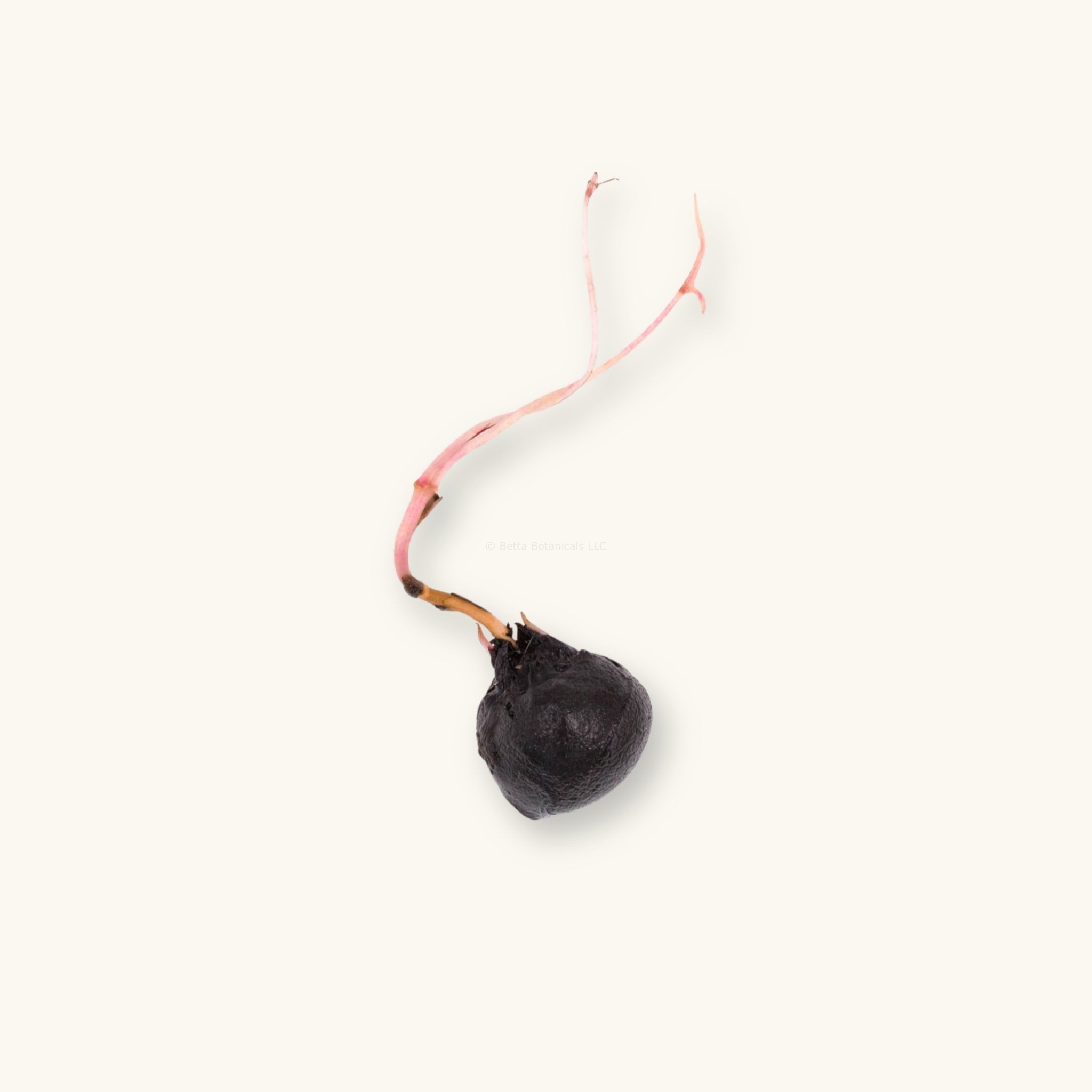
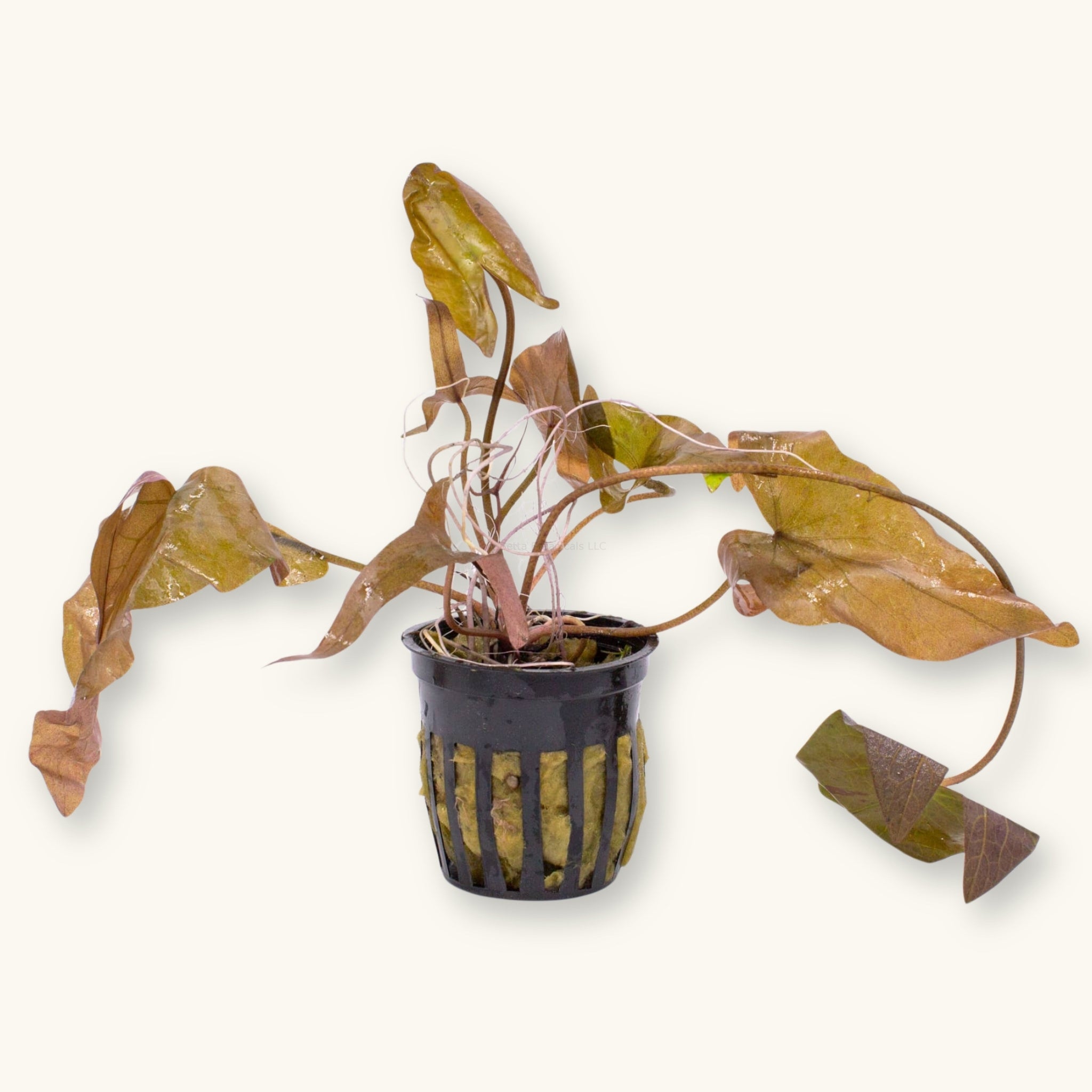
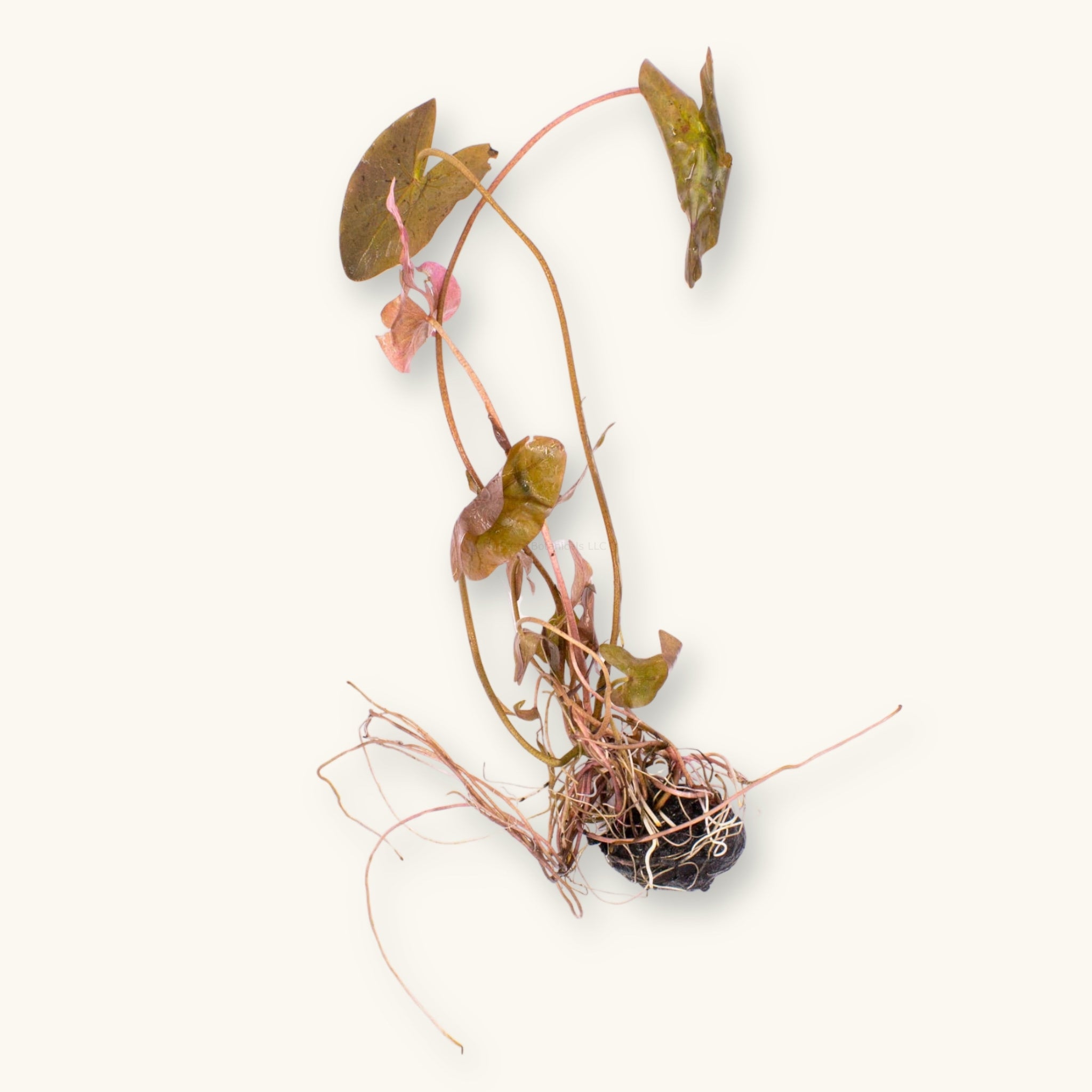
Dwarf Aquarium Lily | Nymphaea stellata
Dwarf Aquarium Lily
Scientific Name: Nymphaea stellata
Common Name: Dwarf Water Lily or Dwarf Aquarium Lily
An ideal plant in the botanical method aquarium that can help absorb excess nutrients and create intricate habitats in its stems, submerged leaves, and emergent leaves. Dwarf Aquarium lilies differ from Red Tiger Lotus in their leaf shape, being more of an arrowhead, while their bulbs are also larger. New leaves get taller and taller each time a new one pops up, until eventually reaching the surface. Once a Dwarf Aquarium Lily reaches the surface, there is a possibility it will sprout a flower. If you don't want the lilies to float on the surface, trim the tallest leaves off to encourage more compact growth.
Dwarf Aquarium Lily produces an extensive root network that will absorb any and all nutrients in the substrate. Be careful and make sure you are dosing fertilizer so the other plants will have that available to them.
Caring for Dwarf Aquarium Lilies in Blackwater Aquariums
Care: Easy
Lighting: Low-Medium
CO2: Not Required
Tint Tolerance: Low to High, with submerged leaves tolerating less tannins and emergent leaves being unimpacted
Native Range: Unknown
All Plants may contain snails or snail eggs. We keep them in all of our tanks for the benefits they provide. Our blackwater aquarium plants are provided by H2OPlants in adherence to their Shipping and DOA Policies. Your curated selection will arrive in their packaging separate from your botanical & merch orders.

Dwarf Aquarium Lily | Nymphaea stellata
contrast the tint with greenery
While the aesthetic appeal of tinted waters can be quite attractive to us, the recreation of nature—which includes both submerged and emersed plants—is the end goal. Flora helps to improve water conditions, feeding patterns, spawning displays, and territory building.
Aquatic Plant FAQs
DOA Policy
Please ensure that you add a heat pack or cold pack to your orders if temperatures in your area are above 90°F or below 40°F. Click for more info on our DOA Policy.
Are these plants duckweed and snail free?
All Plants may contain snails or snail eggs, small macroinvertebrates, and duckweed. We keep them in all of our tanks for the benefits they provide. We have experienced the presence of small snails, ostracods, daphnia, and beneficial detritus worms.
Are your plants only for tinted water conditions?
Nope! All of our plants will grow perfectly in untinted aquariums that have CO2 and aquasoils, or low-tech planted aquariums. Our selection, though, is optimized for emersed plant growth and low- to medium-tinted water environments.
What is your aquatic plant shipping schedule?
We’re a small company and ship Tuesdays & Thursdays only. Orders placed Wednesday–Sunday → Ship Tuesday. Orders placed Monday–Tuesday → Ship Thursday
Are your plants just for bettas?
Nope. Our aquatic plants are safe for almost all aquariums, terrariums, vivariums, and paludariums. Many of our plants can be grown emersed in filter compartments, vivariums, or incorporated into wabikua.
What are Tannins?
Tannins are natural compounds released by leaves, seed pods, and bark as they decompose in water. They soften water, gently lower pH, and create the characteristic tea-stained tint found in blackwater habitats. But their role goes far beyond color—tannins fuel beneficial bacteria, fungi, and biofilms, which form the foundation of a healthy ecosystem. They also offer mild antifungal benefits and help reduce stress in fish by replicating the natural conditions they’ve evolved in. At their core, tannins are plant-derived antioxidants that connect your aquarium to the same processes at work in wild flooded forests and streams.




